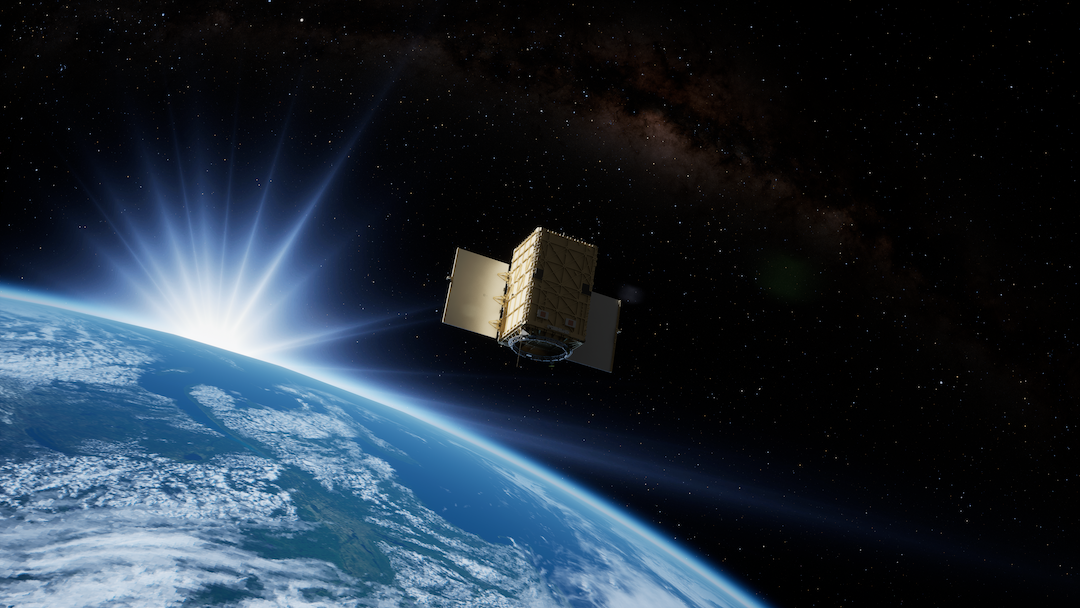Latest News

A rendering of Boeing’s Q4S satellite, which will demonstration quantum entanglement swapping on orbit. Photo: Boeing
Boeing is working on a satellite mission to demonstrate quantum entanglement swapping capabilities in space. Boeing called it a first-of-its kind space mission that lays the groundwork for a global quantum satellite network.
The mission is set to launch in 2026 and will involve two entangled-photon pair sources housed within one space vehicle. Boeing is working with payload and technology partner HRL Laboratories, which is a joint venture between Boeing and GM. The mission will fly on an Astro Digital Corvus satellite.
The mission is called Q4S, which is a nod to quantum physics, the four photons involved in the entanglement swapping protocol, and the space environment.
It is a Boeing-funded mission that the company says could have an impact on secure applications such as fault-tolerant systems that reduce errors in computing, secure voting mechanisms, and blind quantum computing.
This mission is one of the cornerstones of Boeing’s quantum portfolio strategy, Jay Lowell, chief engineer for Boeing’s Disruptive Computing, Networks & Sensors organization, said in a recent media briefing. Lowell said this demonstration will inform how quantum networking technology could impact Boeing’s products and services.
“We recognized that we had to take some risks in the development of the portfolio and do things that were hard and hadn’t been done before, in order to understand that path of how this is going to be impactful,” Lowell said.
A ‘Spooky’ Demonstration
Quantum entanglement is the phenomenon that Albert Einstein referred to as “spooky action at a distance.” It involves quantum teleportation — where information carried by a particle can be transferred without having to move the particle itself across the distance.
“What we are demonstrating is called quantum entanglement swapping,” Lowell said. “This is a method by which you are allowing the exchange of quantum information between two parts of a network without those portions of the network having been in contact with each other.”
Lowell said that Q4S is different from other quantum missions because it will demonstrate a core protocol for a generalized quantum network. Other quantum missions have focused on executing the protocol of quantum key distribution.
“This is the generalized communication protocol that’s needed for a quantum network that is not just sending a stream of single photons across its network,” he said.
Quantum entanglement has been demonstrated in lab experiments, but never in space.
The 2019 SpooQy-1 mission by the National University of Singapore demonstrated the operation of an entangled photon pair source in a cubesat. Boeing’s Q4S mission will deploy the advanced, quantum entanglement-swapping protocol in a smallsat platform.
The mission does not involve direct quantum computing on orbit.
Boeing and HRL Laboratories have demonstrated entanglement swapping in a lab testbed with components that are representative of what is used in the payload design.
Lowell said one of the major challenges is translating the physics experiment to work on orbit, which is so different from a lab environment. The partners have done component and subsystem environmental testing to demonstrate that these components will work in space.
Future Applications
A successful demonstration will pave the way for quantum communication networks, which Boeing believes can have impacts in sectors like computing, healthcare, finance, and telecommunications by enabling ultra-secure transmissions and novel computing approaches.
“We see this enabling a much more efficient trade toward a global network than it will going through fiber,” Lowell said. “We’re not saying that fiber won’t be important. … The network will be a hybrid. We see this as being able to tackle the long-haul traffic of quantum information, whereas fiber will be short-haul traffic for quantum information.”
Lowell pointed to use cases in network security to verify the location of network nodes, so bad actors cannot falsify or hijack a node.
He also pointed to interferometric measurement imaging, which could be useful for resource monitoring — to calculating precise estimates and understand the difference between water levels and water tables globally, or to precisely localize emissions data.
This mission will likely be the first in a series of demonstrations on the path to a future quantum communication network. Lowell was careful not to ascribe any timeline to such a network.
He said Boeing is seeing interest from both commercial and defense customers to understand how to construct and what to do with this kind of network.
“We have been having discussions with both kinds of customers,” he said. “We are relatively confident that we will have engagements with at least one of those kinds of customers [and] establish some collaboration to see how to move forward.”
Stay connected and get ahead with the leading source of industry intel!
Subscribe Now